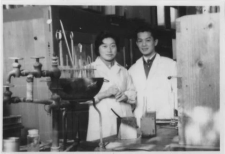GDC Data Dictionary
New GDC Data Dictionary properties were added in the Okazaki release. Key highlights include:
- Expanded TCGA Data Properties: New attributes have been added to further refine The Cancer Genome Atlas (TCGA) clinical data including new treatment types and drug categories, additional diagnosis fields, pathology details, follow-up properties, and other clinical attributes
- Timepoint Categories: Additional timepoint classifications to enhance longitudinal analysis
For more information, please refer to the GDC Data Dictionary 3.3 Release Notes.
GDC Data Transfer Tool (DTT)
Enhancements were made to the GDC DTT in a new GDC DTT 2.3 client:
- Expanded Mac Compatibility: Features and bugfixes to enhance GDC DTT compatibility with different types of Mac processors
GDC releases are named alphabetically in honor of distinguished scientists and their significant research contributions. This GDC release was named after Reiji Okazaki.

Only in the world of science can one become renowned for the discovery of a fragment—but that’s just what Tsuneko and Reiji Okazaki did. Working in the United States and Japan in the late 1960s, they helped discover the "Okazaki fragments," short stretches of DNA formed in the process of DNA replication. Tsuneko Okazaki continued her research following the 1975 death of her husband, Reiji, even though at that time female researchers in Japan did not have equal scientific standing with men. Okazaki struggled with finding childcare in 1970s Japan, which prompted her campaign to develop better support systems for working mothers. Yet, Okazaki, who is still alive, preferred to focus on science than on gender-based slights "That sort of thing happened a lot, but it's trivial,” she said. “What's important in research is how you find a good problem to tackle, and solve it."
